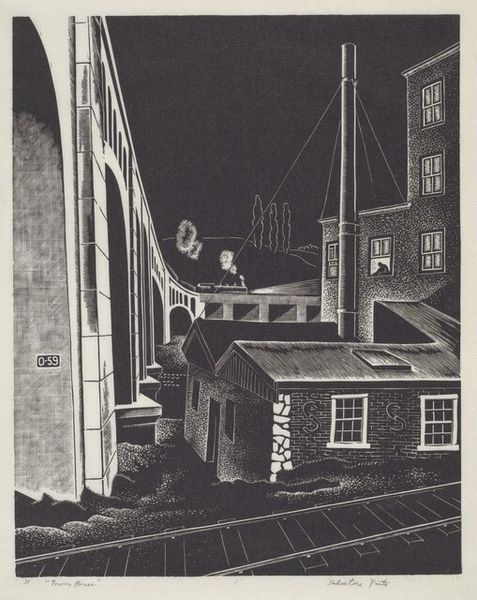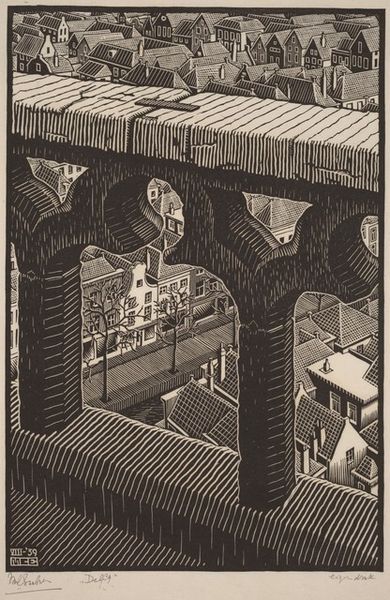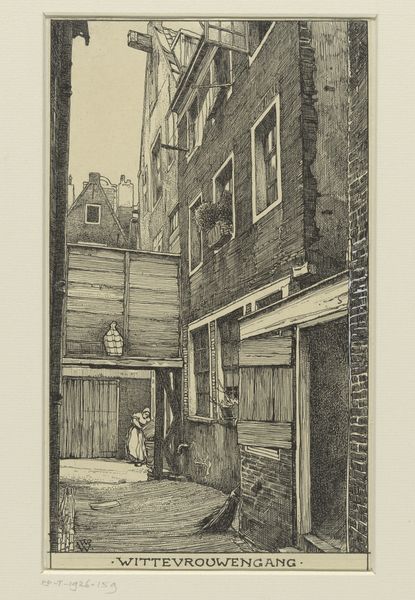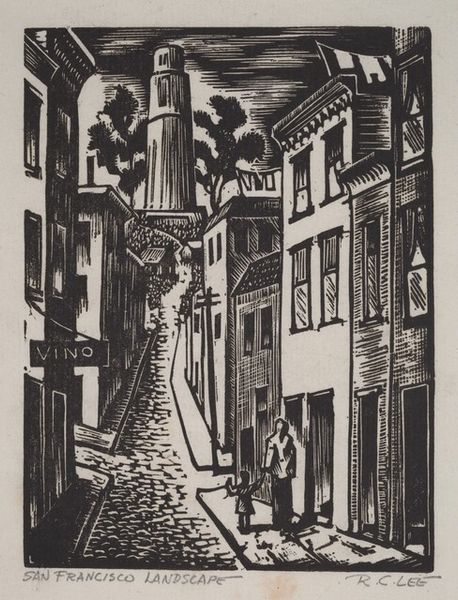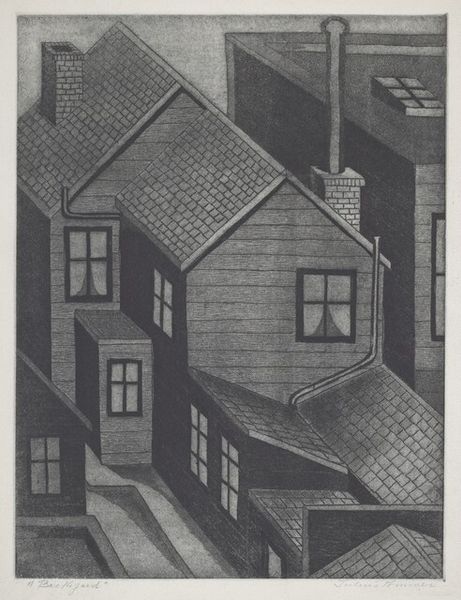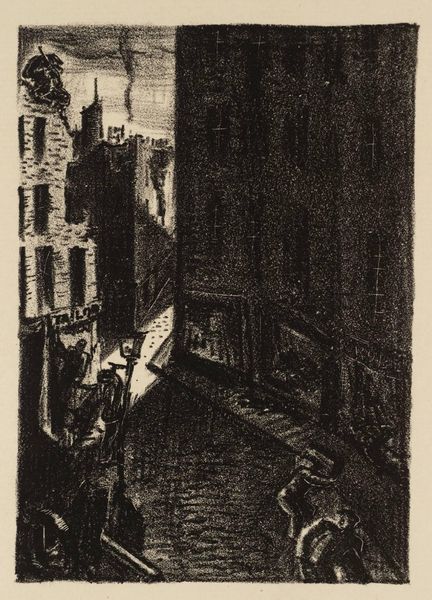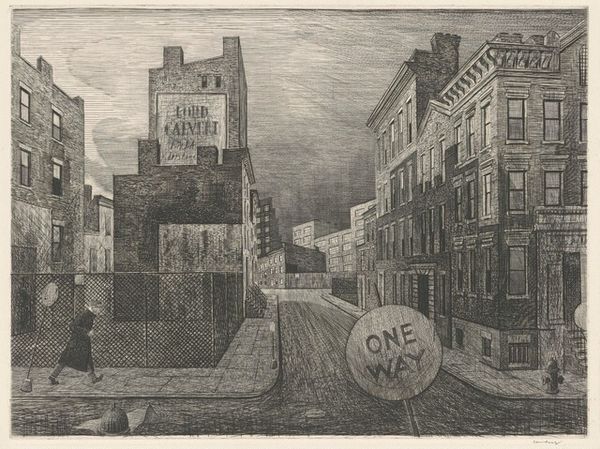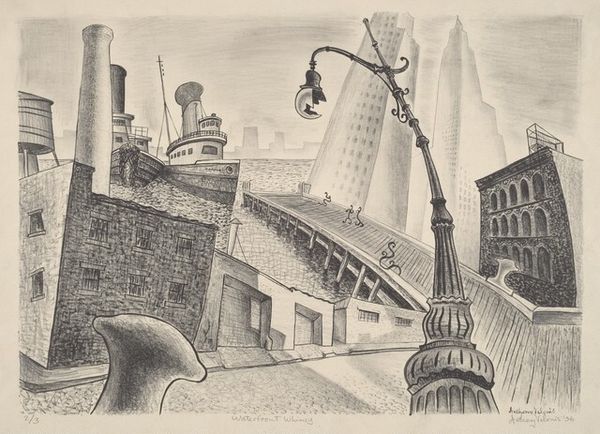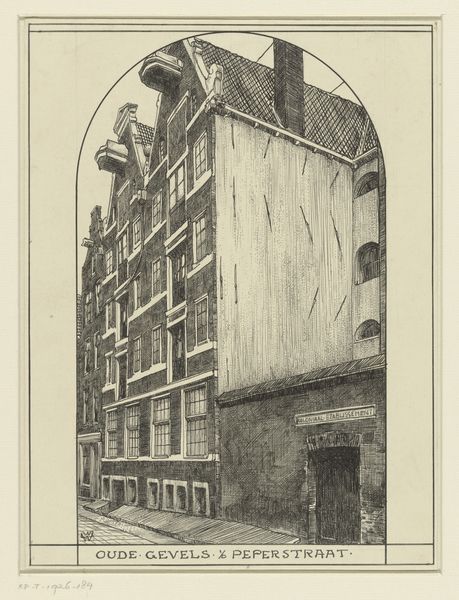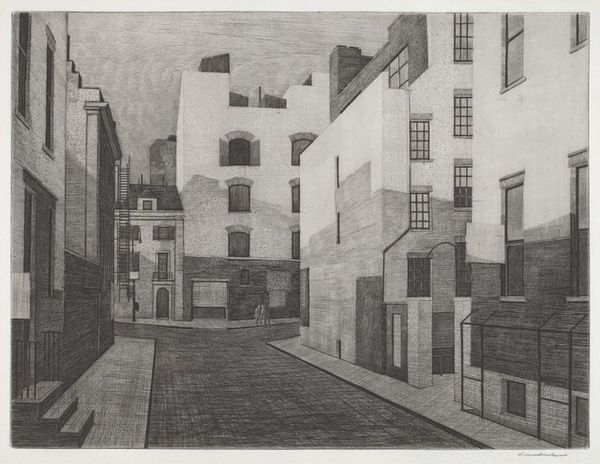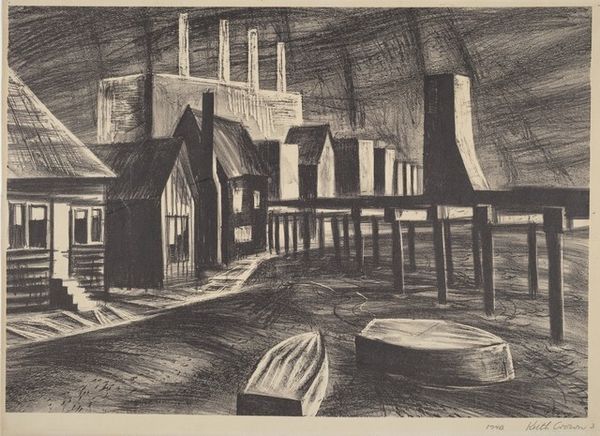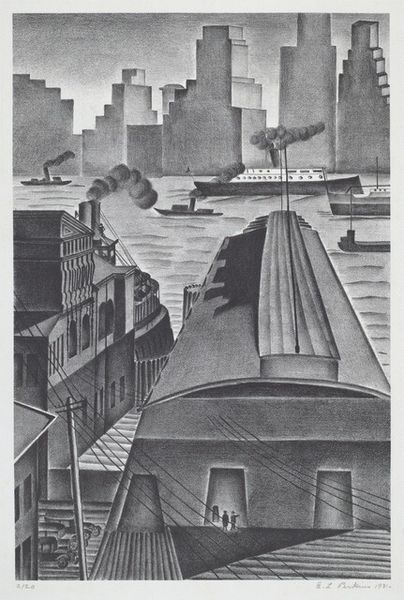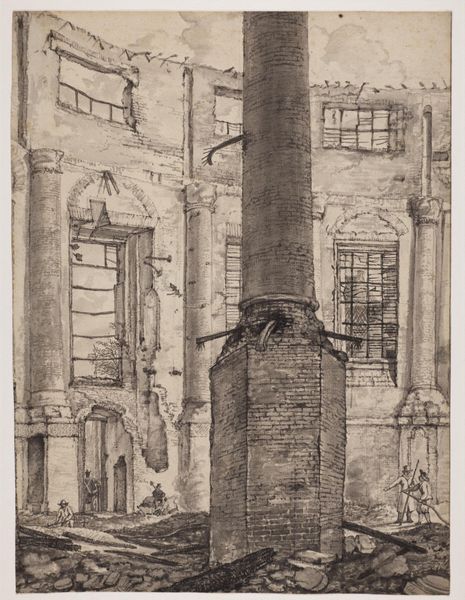
Copyright: National Gallery of Art: CC0 1.0
Editor: Right, next up we have M.C. Escher's "Voldersgracht", created in 1939. It’s a woodcut print depicting a canal scene. It feels almost claustrophobic, with the buildings towering overhead. How would you interpret this piece? Curator: Ah, Escher. Even his more 'realistic' works have a delightful twist, don't they? This isn't just a street; it's a psychological space. The dark canal seems to swallow light, the buildings press in… almost as if we're trapped within the artist's own meticulous, yet somewhat anxious, perception. Editor: Anxious? I hadn't thought of that. I was focused on the technical skill. Curator: Look at the precision – each line perfectly placed, creating depth, shadow. But isn't there a *strangeness* to the perspective? It's accurate, but almost too accurate, hyper-real. That can feel unsettling. And Escher did like to play with our perceptions. Is it beautiful? Absolutely. Is it… entirely comfortable? I'm not so sure. What details do you find yourself drawn to? Editor: The water pump! It's so ordinary, yet so prominently placed. Curator: Exactly! An object of mundane practicality elevated, almost mocking the grand architecture looming above. It's a gentle rebellion, perhaps? Escher reminding us that beauty exists in the everyday, even in the shadow of towering structures. Editor: I see what you mean. It’s like he’s framing the ordinary. It's amazing how much depth is conveyed through woodcut, and all that precision definitely adds an emotional layer. Curator: Indeed. Now when you walk past that very *ordinary* pump, maybe you’ll catch its subversive wink. Editor: Definitely something I'll consider from now on! Thanks for sharing that perspective!
Comments
No comments
Be the first to comment and join the conversation on the ultimate creative platform.
